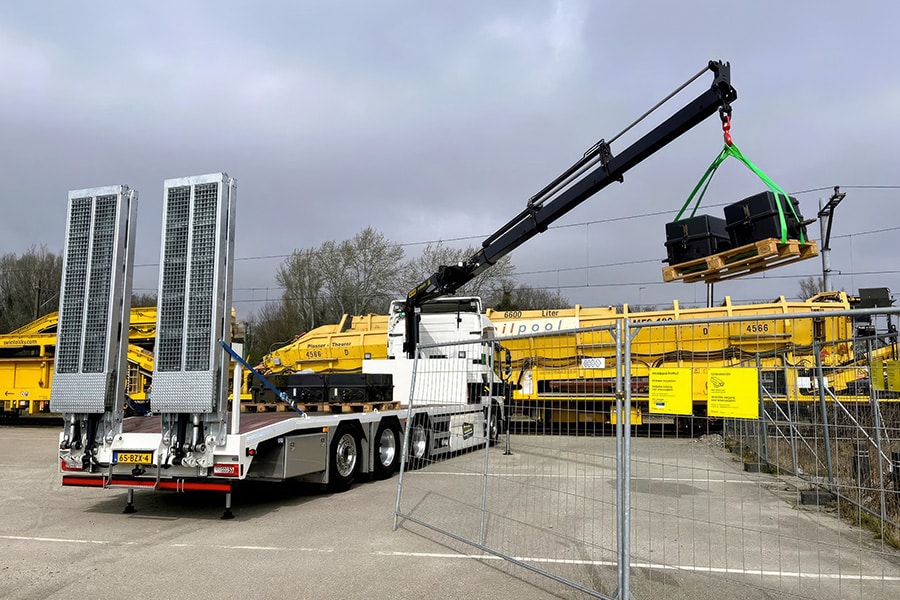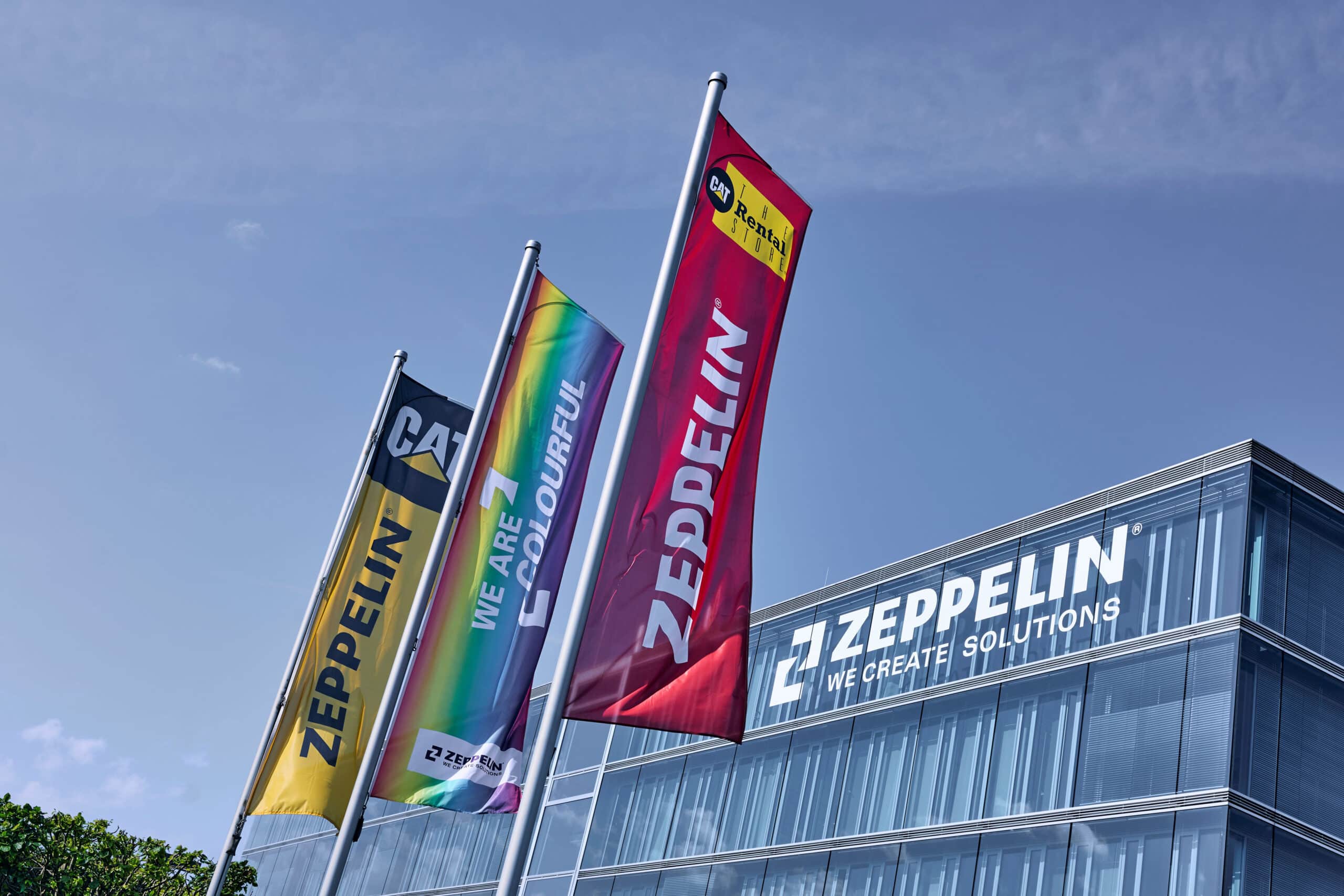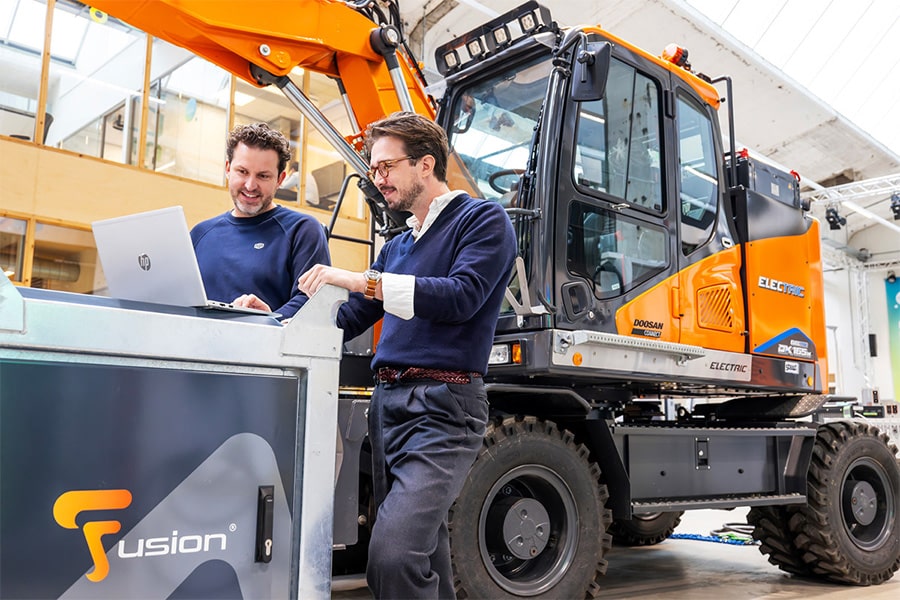
Sustainable track maintenance calls for deployment of Volvo FMX 8×4 Electric
The infrastructure sector faces a radical sustainability challenge. Rail contractor ASSET Rail is showing that this challenge is no reason to lose momentum. Indeed, the company, which is responsible for track maintenance in almost half of the Netherlands on behalf of ProRail, added a special construction vehicle to its equipment fleet in March. This Volvo FMX 8×4 Electric is their first zero-emission truck, built specifically to transport rail equipment such as the RomiTamp 2.0 tamping machine. Why was an electric solution chosen and how do you like it in practice? We asked Henri Oudendorp, Contractor Specials & Calamities.
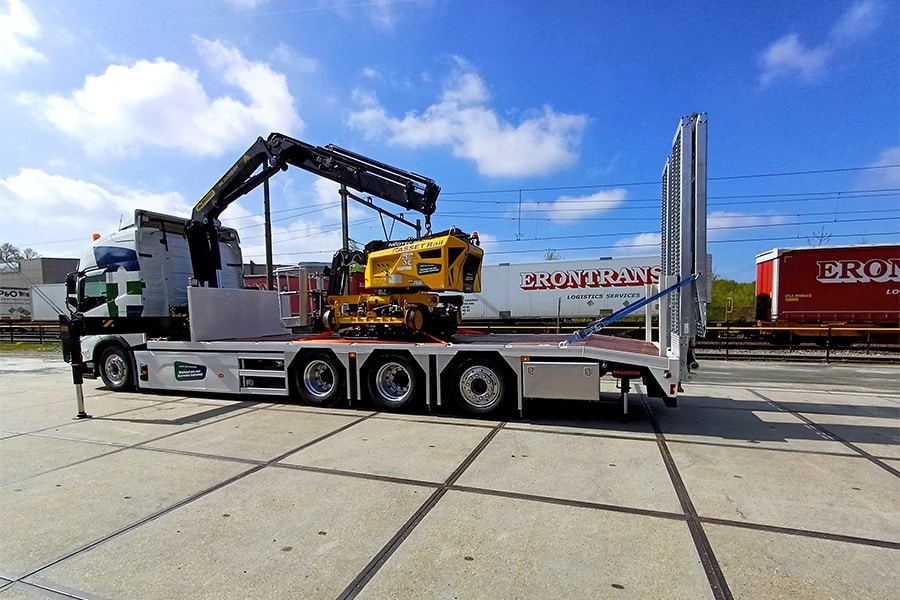
Anyone who thinks that working sustainably means only experimenting with lighter vehicles will be deceived at ASSET Rail. This innovative rail contractor has an impressive arsenal of equipment, including hybrid and electric rail vehicles such as the hybrid Stormobiel based on a Volvo FE 4×2, two emission-free aerial platforms and an electrically powered RailHog. However, the recently commissioned Volvo FMX 8×4 Electric is of a different order. With this vehicle, ASSET Rail is explicitly committed to making heavy transport more sustainable. It is the next step towards completely emission-free operations by 2030.
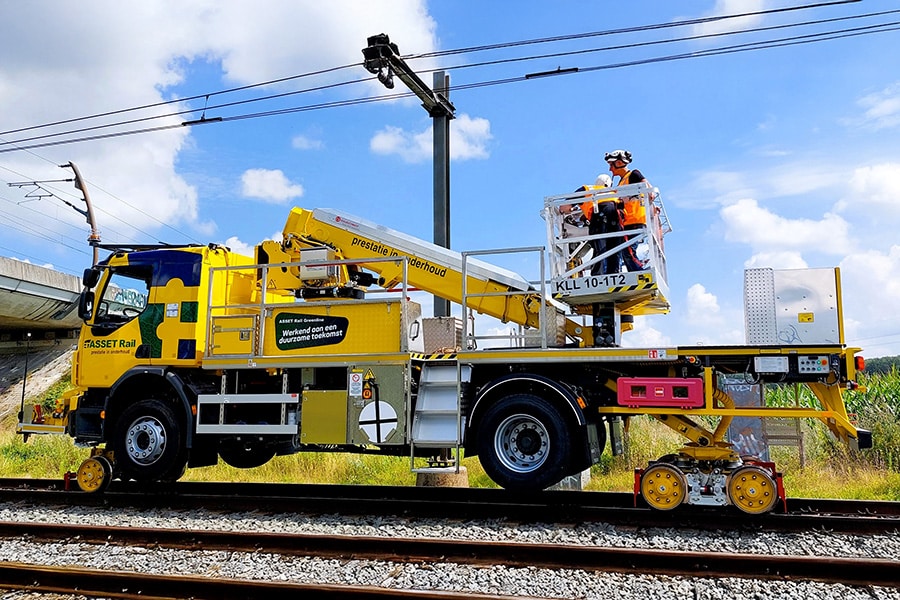
Reduce footprint
"We have been working on reducing our ecological footprint for quite some time," says Oudendorp. "ProRail's sustainability requirements are becoming increasingly stringent, which is perfectly in line with our own ambitions and those of our shareholders Dura Vermeer and Arcadis." ASSET Rail has been on step 5 of the CO2 Performance Ladder for years and is continuously working to reduce its nitrogen emissions. The choice of an e-truck was therefore logical and also much needed. "Previously, we had our tamping machine transported by a subcontractor with a V8 diesel truck. We wanted to take this transport into our own hands and make it more sustainable. That's how we ended up with the Volvo FMX Electric."
That the FMX 8×4 Electric is a well-considered choice is evident from its intensive preparation and unique specifications. In cooperation with Volvo Trucks dealer Harbers and Brinks Carrosserieën, a customized vehicle was realized that perfectly meets ASSET Rail's specific requirements. "The truck especially had to be able to transport heavy equipment such as the RomiTamp," explains Oudendorp. "That weighs 13 tons and has a rail chassis. Therefore, the ramp floor was lowered and cutouts were made in the chassis so that the wheels of the RomiTamp sink about 19 centimeters into the loading floor. This keeps us neatly below the maximum transport height of 4 meters."
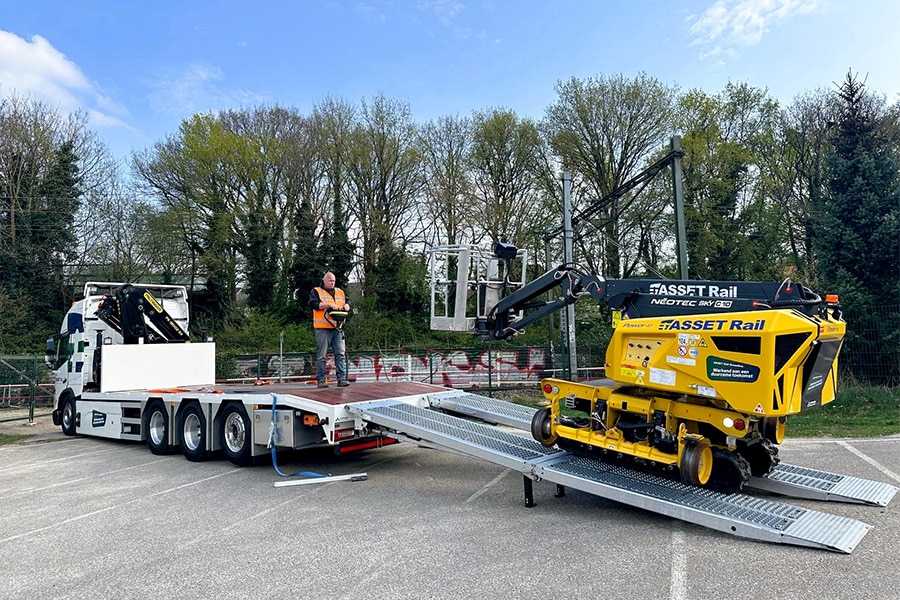
Attracting attention
The superstructure is equally special. For example, the multi-purpose machine transporter is equipped with a triple-extendable Palfinger PK 18002-EH truck-mounted crane with 18-ton-meter lifting capacity, an electric HPLS for maximum performance during tough jobs, hydraulically folding support legs and radio remote control. Furthermore, Dhollandia's part-folding and hydraulically operated ramps immediately catch the eye. "This truck is truly one of a kind. There is no other FMX 8×4 Electric with this superstructure in the Netherlands - maybe even in Europe," Oudendorp said. "And that attracts the necessary attention within the industry."
Opting for electric driving is not yet a foregone conclusion in rail infrastructure. Long working days, remote workplaces and high weights make it a challenge. Yet ASSET Rail is proving that it can be done - if properly prepared. "The vehicle weighs about 20 tons and has a composite total weight of 45 tons," Oudendorp explains. "We stay just under that, including loading crane and load. With a total of six battery packs, good for 560 kWh, the stated range is 350 kilometers, but in practice we take into account 250 to 275 kilometers. So that means we have to plan well and charge smartly."
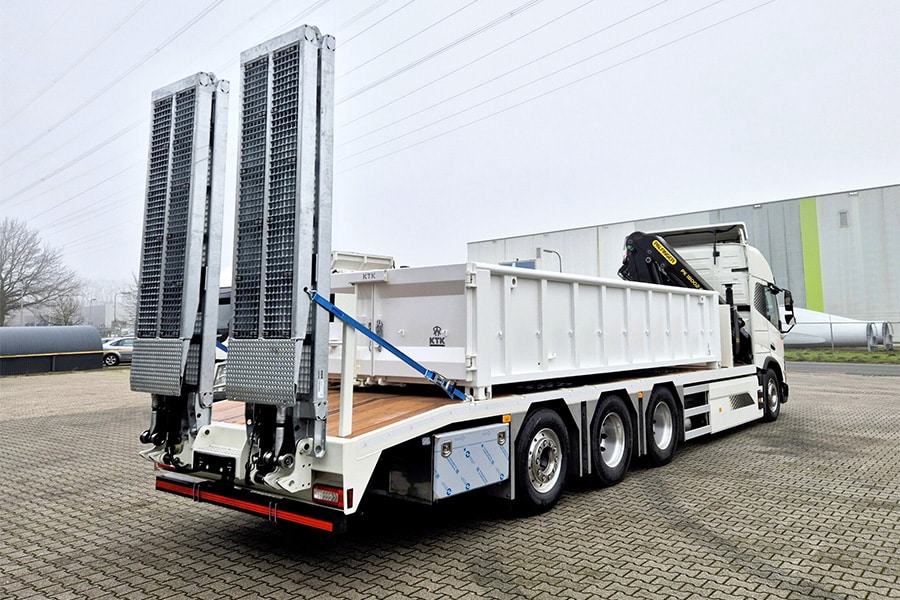
Less tiring
Fast charging on the road is now more or less a regular part of the working day. This is quite fast, because with a charging rate of up to 260 kW, the batteries are recharged to 80% in just over an hour. "Charging on the job is trickier, because then you soon need a 43 kW connection. We work long days without fixed working hours and have to be available 24/7 for breakdowns or emergencies. That requires flexibility, also in terms of charging strategy." Yet the benefits far outweigh that. "Electric driving is a breath of fresh air," he enthuses. "The silence in the cabin makes long drives much less tiring, in fact relaxing. After a long working day and a 200-kilometer return trip, I still get out of the car refreshed."
The FMX 8×4 will be used primarily to transport the RomiTamp 2.0 tamping machine and other specialized equipment, such as railroad work platforms. ASSET Rail expects to drive 50,000 to 60,000 kilometers annually with the new acquisition. In doing so, the vehicle not only contributes to reducing CO2 emissions, but also to efficiency; by transporting the machines themselves, one is less dependent on third parties and deployment can be achieved more quickly. "We also see that an electric truck has commercial value," Oudendorp notes. "Increasingly, we are getting requests to help think about emission-free transport for rail projects. That is exactly where we want to go: sustainable, reliable and flexibly deployable."

Truck with vision
Volvo's FMX Electric is designed for heavy-duty construction and infrastructure work. Its modular construction allows custom solutions for concrete mixer or truck-mounted crane, such as at ASSET Rail. The truck is available ex-factory as a tractor or box truck in various configurations, from 4×2 to 8×4. Two or three electric motors provide between 330 and 490 kW of continuous power (450-666 hp), coupled to the acclaimed I-Shift automatic transmission. As needed, Volvo mounts two to six batteries with capacities ranging from 180 to 540 kWh. Charging takes from 2.5 (250 kW DC fast charging) to 9.5 hours (43 kW AC) with the largest battery pack. While fewer batteries reduce mileage, they also provide a shorter wheelbase, making the truck even easier to maneuver on tight construction sites.
"For us, the FMX offers the right balance between power, comfort and durability," states the ASSET Rail performer. "Especially when you look at what is now possible in the market, Volvo Trucks and our dealer are really leading the way. Their experience with electric vehicles absolutely gave us confidence that this investment would succeed." Although there are currently no concrete plans to expand the electric fleet, Oudendorp does not rule out more to follow. "Several tenders have been submitted, with sustainability counting heavily. If we win those, we should scale up further. Then more electric trucks and rail vehicles will come naturally."

Falling and getting up
The internal organization also plays a role in this. "Working emission-free does require a different mindset. Not only of drivers, but of the entire organization. How do you plan the deployment? Where do you load? How long can you keep working? You don't learn that from a book, but in practice. And yes, this involves trial and error. But it also delivers a lot - for your employees, your environment and the future of the railroad." ASSET Rail's Volvo FMX 8×4 Electric provides a powerful example of how zero-emission operation can also be applied within the tough and unpredictable field of track maintenance.
Thanks to the close cooperation between all parties involved, a vehicle was created that perfectly fits the practice and vision of one of the country's largest rail contractors. "We wanted the best of both worlds: emission-free and with a lot of payload capacity. Of course it remains a costly investment, as with the two electric railroad work platforms, but we are showing with this that durability and performance go hand in hand, even under such tough conditions."
